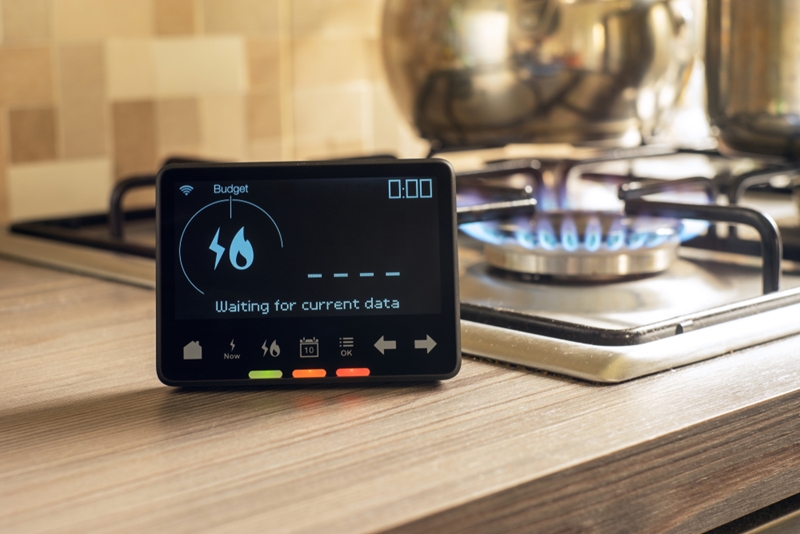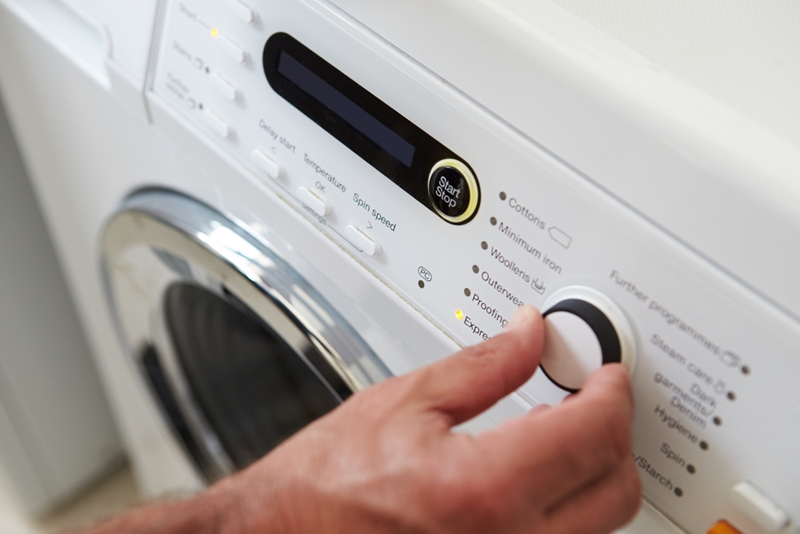![How To Use Washer Dryer Combo [Step-By-Step Washer Dryer Guide] How To Use Washer Dryer Combo [Step-By-Step Washer Dryer Guide]](https://media-child.powerpointwallasey.co.uk/Upload/fldBlog/v-638448057857235119/AdobeStock_487066704-min.jpeg?maxwidth=800&404=default&format=jpg&quality=100)
How To Use Washer Dryer Combo [Step-By-Step Washer Dryer Guide]
Our step-by-step guide to using a washer dryer
Washer-dryers are a great solution for small houses and those that don't have much room in their property for two different laundry appliances. Washer dryers are a great cost-effective option for couples or small families that require both an appliance that washes and dries their clothes however may not have the budget or space for two separate units.
A washer-dryer combo is a type of laundry appliance that combines a front-loading washing machine and a condenser clothes dryer into one. They typically offer all the features, modes and programmes to which your standard washing machine and tumble dryer would apart from all these features come in one regular-sized machine rather than two making it the perfect choice for homes with minimal space.
If you are reading this article, it is more than likely that you have gone away and purchased yourself a new washer dryer or are considering the possibility of integrating one into your home. Throughout this guide, we will provide you with the simple steps on how to use a washer-dryer combo so that you can save time on washing and drying your dirty laundry as well as reduce costs on your energy bills and carbon footprint impact!
If you are looking for a new tumble dryer in the Wirral area, get in contact with Powerpoint Wallasey on 0151 3911843. We are proud to stock a selection of affordable washer dryers from brands such as Hotpoint, Bosch, Hoover and many more.
Sorting & Loading Clothes
When it comes to washing and drying any type of dirty laundry, you first need to begin by separating your laundry out into different piles. The amount of clothes you attempt to wash will depend on the size of washer dryer you have purchased with the typical trend being the larger the drum capacity, the more weight you will be able to wash and dry per cycle.
The average size of tumble dryer that most people choose is a 7 - 8kg. Washer dryers range from 5kg - 16kg+drum sizes. On average a couple that lives together would choose a drum capacity of around 5 - 8kg whereas a larger family would pick a drum size of 9kg - 16kg.
When it comes to sorting and loading your clothes before a wash or dry you will need to separate your laundry via type, colour and fabrics to ensure that colours do not bleed together and that you are washing the laundry on the desired temperature and mode for that specific fabric and material. If you ignore this step, your clothes can shrink!
Once separated make sure that you aren't overloading your washer dryer because this will cause further issues down the line with the performance and quality of your washer dryer combo.
Adding Detergent
Once you have separated and loaded up your washer dryer combo, you will need to add the detergent. Washing detergent is a substance or mixture that contains soaps or surfactants that can help wash and clean your clothes. Detergent comes in different ways such as pods, liquids or tablets and is what helps make your clothes smell fresh again!
To add your detergent, simply follow the guidance given by the detergent company. Most require you to add some sort of liquid to a pot and chuck it in with the loaded dirty laundry within the drum of your appliance. Others will require you to throw a tablet or pod into the drum alongside your dirty laundry before the spin cycle begins.
Most washer dryers will also have space for fabric softeners. These are useful because it will help cut down on wrinkles and make your laundry feel super soft!
Select Wash Cycle
Once you have loaded up your washer dryer and added the detergent you now need to select the specific wash cycle for your combination washer dryer. Some of the cycle types for washing your dirty laundry include:
Normal/Cotton: This cycle is suitable for everyday clothing items like cotton shirts, jeans and towels. It typically uses warm or hot water and a medium-speed spin.
Delicates/Gentle: Use this cycle for delicate fabrics such as silk, lace or lingerie. It uses a cooler water temperature and a slower spin to prevent damage.
Quick Wash: Ideal for lightly soiled items or when you are short on time. This cycle typically completes the wash in a shorter duration by using higher spin speeds.
Heavy Duty: For heavily soiled items or sturdy fabrics like work uniforms or heavily soiled linens. This cycle utilizes hotter water temperatures and longer wash times.
Specialty Cycles: Some washer dryers offer specialty cycles like bedding, sportswear or allergen removal. Choose these cycles for specific fabric types or laundry needs.
Although these cycles may not be named similarly on your washer dryer or may not contain the features; these are the most common spin cycles that you will need to use when washing. With that being said, if you are unsure it is always best to refer back to the user manual.
Select Dry Cycle
Once your wash cycle has been completed you can then adjust the cycle to begin drying. Some of the most common modes and features include:
Regular: Use this cycle for most fabric types, including cotton, polyester and blends. It typically uses medium heat and a standard drying time.
Delicate: Choose this cycle for delicate fabrics such as silk, wool or lingerie. It uses low heat and shorter drying times to prevent damage.
Permanent Press: Suitable for wrinkle-resistant fabrics like dress shirts and khakis. This cycle uses medium heat and a cool-down period to reduce wrinkles.
Timed Dry: Allows you to manually set the drying time based on your preferences. Use this option for specific drying durations, especially for items that require shorter or longer drying times.
Air Dry: Does not apply heat and relies on room temperature air to dry clothes gently. Ideal for delicate items or items that are not suitable for heat drying.
Once the drying cycle is complete, you can remove your washing. It will now be clean, smelling incredible and also dry! It is as easy as that. All you have to do now is hang the clothes back in your wardrobe with no additional effort or time needing to be spent on your laundry. That is how efficient and easy a new washer dryer can be for your home.
Final Tips
You should be well on the way to operating your new washer dryer at 100% with this simple step-by-step guide. However, we also have some important tips and considerations that you must think about if you want to ensure the lifespan and maximise the performance of your new weather dryer combo for years to come.
The first tip is to always remember to clean the lint trap after every drying cycle to ensure that your washer-dryer combo performs to the best of its abilities. More importantly, it is also to reduce the risk of fire hazards within your home.
In addition to this, you should also perform regular maintenance every few months or so, periodically cleaning the washer dryer drum and the detergent and lunt compartments too. This can help prevent the buildup of nasty bacteria that can begin to smell if not cleaned regularly.
Overall, a new washer dryer is a great appliance to own in your home with it not only help you save space but will also be a life saver when you need to wash and dry your dirty laundry.
Best Washer Dryers In Wirral
Here at Powerpoint Wallasey, we are proud to stock a wide selection of different types of washer dryers available at competitive prices for fast delivery across the Wirral area. We stock washer dryers from some of the leading domestic appliance and laundry brands including Hoover, Hotpoint, Indesit and many more.
If you would like to know more about our extensive range of washer dryers, give us a call on 0151 3911843, visit our showroom in Birkenhead, Wallasey or browse our vast selection of high-quality washer dryers online today.






